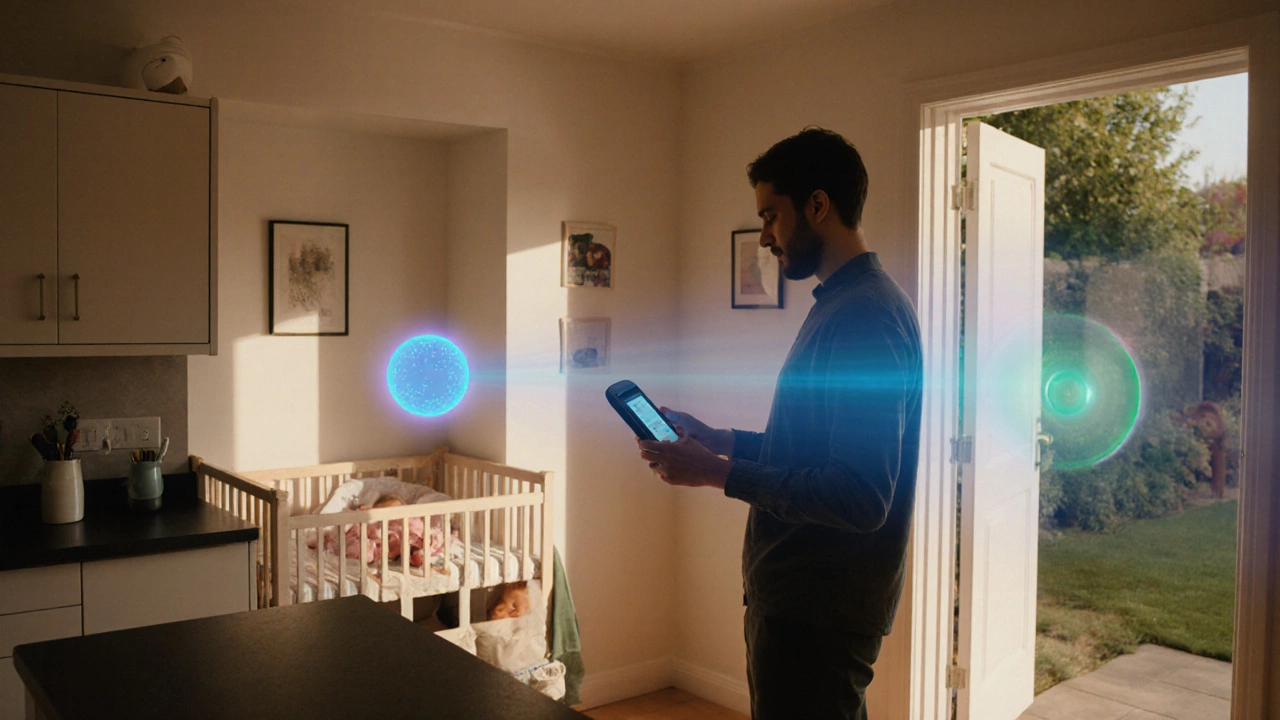When you start hunting for a baby monitor range, you’re really looking for a set of tools that let you watch, listen, and even get alerts about your little one’s wellbeing. Baby monitor range covers audio‑only, video, and Wi‑Fi enabled devices that give parents real‑time peace of mind. Also known as infant monitoring system, it links naturally to other home‑security gear, turning a nursery into a smart‑safe zone.
A motion sensor detects movement using passive infrared (PIR) or dual‑technology methods. It’s a core part of pet‑friendly alarms and many modern baby monitors because it can tell the difference between a baby’s gentle stir and a pet’s quick dash. The sensor’s attribute of temperature stability means fewer false‑alarm triggers, and its value shows up in longer battery life for wireless monitor units. Pairing a motion sensor with a baby monitor creates a semantic triple: baby monitor range ‑ requires‑motion sensor.
Integrating a security camera provides live video, night‑vision, and two‑way audio for visual confirmation. When linked to a baby monitor system, the camera adds a layer of verification that an audible alarm alone can’t provide. A key attribute is its IP rating, which defines how well it withstands moisture—important for nurseries near windows or bathrooms. The value is crystal‑clear footage even in low light, letting parents see if a cry is from the baby or a stray animal outside. This forms another triple: security camera ‑ enhances‑baby monitor range.
The alarm system delivers instant alerts via sound, vibration, or push notification is the final piece of the puzzle. Modern alarm systems can be wired or battery‑backed, ensuring alerts reach your phone even during a power cut. An attribute worth noting is its customizable zones, so you can set a quiet mode for nap time while still getting critical alerts. The value is peace of mind: you know exactly when to intervene. Together they create a third triple: alarm system ‑ notifies‑baby monitor range.
First, check the range. Wi‑Fi models often cover an entire house, but they need a solid router signal. Look for a monitor that offers both indoor and outdoor antenna options if your nursery is near a garden. Second, battery life matters; a monitor with a low‑power mode and a rechargeable lithium‑ion pack can last days without a recharge. Third, night‑vision capability is a must—infrared LEDs should provide clear images without disturbing sleep. Fourth, privacy settings: ensure the device uses end‑to‑end encryption, especially if it streams to your phone. Finally, consider integration. A system that syncs with your existing security cameras or alarm panels gives you a unified dashboard, reducing the number of apps you juggle.
Practical tips round out the guide. Test the audio clarity before buying; whisper into the mic and listen for distortion. Position the camera at a height where you can see the crib without glare. If you have pets, choose a model that tolerates pet movement without sending constant alerts—look for dual‑tech motion sensors. And always read the user manual for firmware update instructions; keeping the software current protects against hacking attempts and adds new features over time.
Below you’ll find a curated collection of articles that dive deeper into each of these topics—motion sensor types, pet‑friendly alarms, security camera placement, and more. Whether you’re a first‑time parent or upgrading an existing setup, the posts will give you actionable insights to pick the perfect baby monitor range for your home.

Learn how far baby monitors really reach, how to extend their range, and what tech, placement, and troubleshooting steps ensure reliable coverage throughout your home.